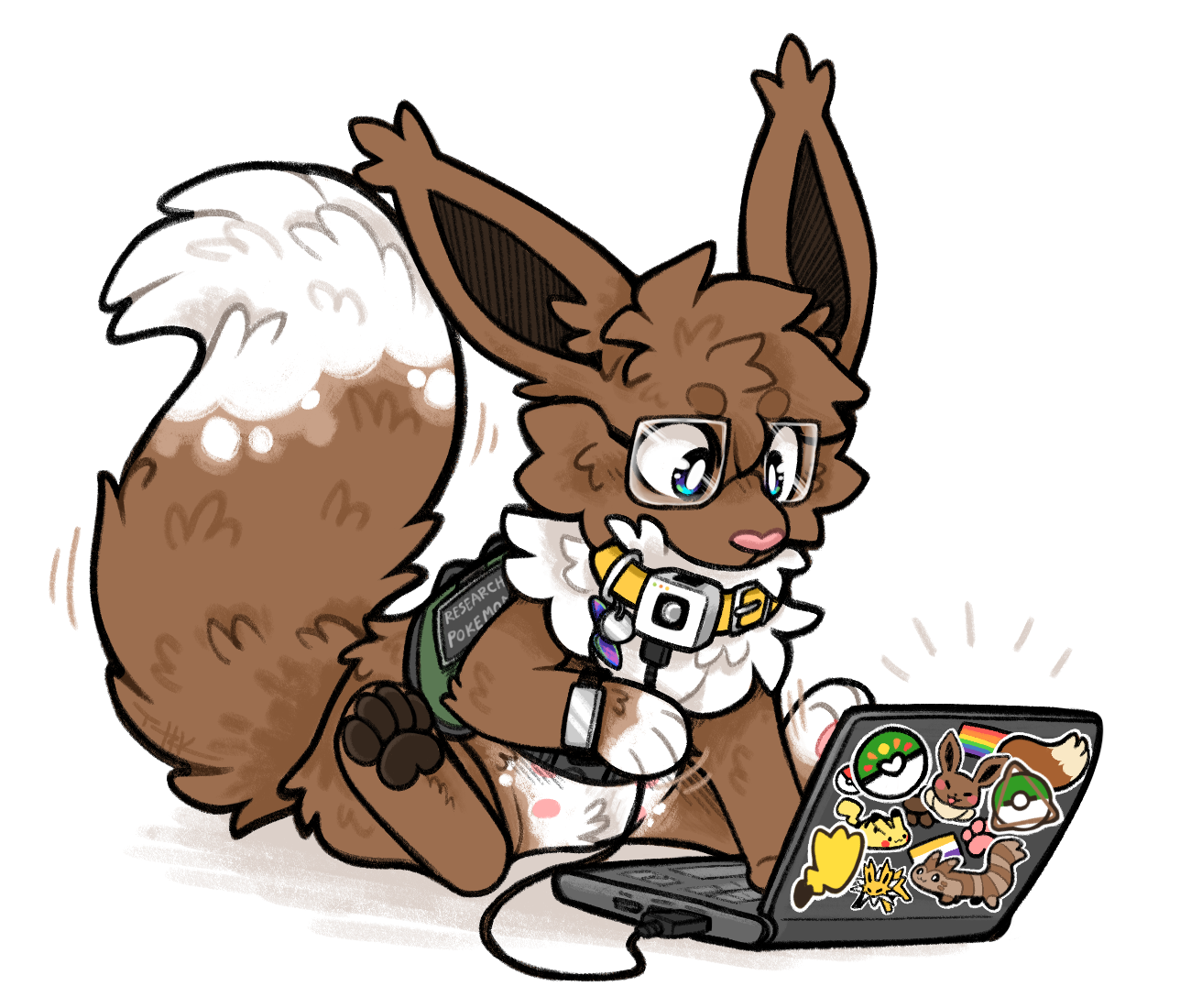Research Proposal

Research Objective:
To study the adaptive behaviors of the Eevee family when exposed to sudden environmental change, and the impact this may have on the local ecosystem and key species within the area.
Alternative Questions: do the adaptive changes of Eevee affect the niches of other species? Is there a point at which Eevee begins to become invasive, even within its natural range? What can we learn from the Eevee family’s distinctive ability to adapt to extreme environmental change, and how can we apply that knowledge towards the preservation of other rare species threatened by habitat loss and degradation?
Challenges to Research: Eevee and its related evolutions are an elusive species in the wild1, and it can be difficult to approach them for live field studies without significant impact to their natural behaviors. Much of their wild behavior remains a mystery2, and captive studies are unable to satisfy the scope of the research objective.
Research Sites:
The research sites were selected based on fluctuation and volatility of the local ecosystem, which might present necessary opportunities for quick adaptation that can be easily observed.
- Control Site: largely contained along a forest edge, providing opportunities to hunt in the open while also staying close to cover away from larger predators. Seasonal cycles and weather patterns are stable and relatively mild, making this site the least variable of the group. Interestingly, despite the population being the largest of the research sites, other species’ populations disproportionately outnumber Eevee at this site, possibly suggesting that the Eevee family necessitates greater environmental fluctuation in order to outcompete during interspecific competition.
- Site 1: a swath of dry, sandy grassland that experiences frequent flash floods during its wet season and extremes in temperatures throughout the year.
- Site 2: a rocky coastline with variable tides and frequent weather events, conditions which make the site difficult for most other land-dwelling species to thrive in.
- Site 3: an area of disturbed old growth forest. The patch of land was illegally logged, which drastically reduced tree cover. In its wake, the site has developed a microclimate which appears to have attracted a unique mix of species, including Eevee.
- Site 4: a mixed population of wild and feral individuals was found to be living in and around an ongoing urban development project. Given the scope of disruption and current studies of other species in the vicinity3, it felt appropriate to include this site in our study.
Research Methods:
Camera traps installed in various locations around each research site provide a way to record behavior and monitor local conditions in-situ and with minimal disturbance. The control site and Site 4 are additionally equipped with live feeds of these cameras, due to proximity to human infrastructure, allowing for easy data collection without the need for sending a technician out to collect and reset the camera.
This project, in addition to the traditional methods outlined above, utilizes a novel approach to field research in an effort to further minimize the impact of anthropogenic disturbance. With the aid of an experimental device4, a research technician can fully assume the form of a pokemon for the duration of a field study5. Equipped with a camera collar, they are able to assimilate into the target population and record subjects of interest up close and with virtually no noticeable alteration to behavior in their presence. With minimal modifications to the hardware, camera traps can also be serviced by technicians in pokemon form, bypassing the need for humans in the field in most situations.
Thus, this study’s outcomes may be twofold in its findings – novel research methods may yield new, previously unknown knowledge about the Eevee family, and, if successful, this study may serve to help pioneer the use of this developing technology in what may be a new and exciting branch of pokemon field research!
Citations, Footnotes:
- Aspen, S. 20XX. Endearing As It is Elusive: Current Practices for Studying the Eevee Family. Pokemon Evolution Journal 22: 130 – 135.
- Virere, T., Galen, M., et al. 20XX. Adapting to Our World: Observable differences in wild vs feral and domesticated populations of the Eevee line.
- Porter, L., et al. 20XX. Urban Pokemon: a research review of pokemon population studies in and around Castelia City. Urban Ecology: Present and Future Journal 16: 35 – 46.
- A prototype of the as-of-yet-unnamed device was approved for use with this study by its lead developer, Wanda Campbell.
- As of writing this research proposal, only one member of the study has volunteered and been approved to use this method of research.
Author's Notes
Date Posted: Nov 30, 2024This one was originally posted to Cohost on Sept 24, 2024, just a week or so before the website went read-only mode. It's based on Furufoo's comic and setting. Now you can read it here!
Original author's notes from Cohost:
whew! i started this one back in december of last year, just as a fun writing exercise to help establish what sort of research my silly little eevee-sona does in this setting. i was thinking about it again the other day, and decided to dust it off and finish it up with a few additions, one of a few last hurrah's before this website goes read-only next month. y'all have been really enthusiastic about both mine and @furufoo's work revolving around this setting, and it's been so much fun!
i don't think it's 100% on the mark, but i wanted to write something akin to research papers and proposals i learned to do in college. it's actually a lot of fun writing pieces like this for fictional subjects, and it helps keep my skills sharp ;3